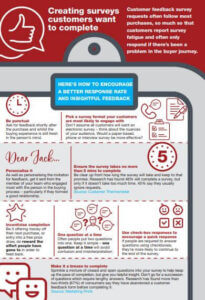- Advertising (0)
- Branding (5)
- Business awards (2)
- Business Development (19)
- Business Growth (7)
- Business listening (1)
- Buyer behaviour (4)
- Client loyalty (6)
- Client Relationship Management (5)
- Conferences (0)
- Conferences and Events (3)
- Content marketing (4)
- Customer experience (11)
- Customer feedback (4)
- Digital marketing (6)
- Direct mail (0)
- Endorsements and recommendations (5)
- Exhibitions (3)
- Exhibitions, Conferences and Events (0)
- GDPR (0)
- Internal marketing (0)
- Key client management (5)
- LinkedIn (5)
- Marketing budgets (3)
- Marketing campaigns (8)
- Marketing Communication (7)
- Marketing measurement (1)
- Marketing on a tight budget (4)
- Marketing planning (20)
- Marketing strategy (17)
- Networking (8)
- News (3)
- Online advertising (1)
- Personal branding (4)
- Personal Development (0)
- Pitching for work (4)
- Presentations (0)
- Pricing and discounting (2)
- Promotional events (0)
- Reputation management (2)
- Sales process (3)
- Search engine optimisation (1)
- Small business marketing (1)
- Social media (7)
- Supplier Management (1)
- Thought leadership (1)
- Website development (3)
How to gain meaningful and useful customer feedback
 Customer feedback is a vital nutrient for any business and can aid long-term growth and build competitive advantage. Your customers’ views and comments can suggest great ideas for product and service enhancements.
Customer feedback is a vital nutrient for any business and can aid long-term growth and build competitive advantage. Your customers’ views and comments can suggest great ideas for product and service enhancements.
They can also prevent you from investing in unnecessary features and developments. In fact, customer feedback can help you develop a more efficient, valuable and profitable business operation.
That is if you listen and act on it.
Why customer surveys are often disappointing

With all these plus points, it’s still unusual to find businesses that use customer feedback to its true strategic potential. Yes, many organisations send out customer surveys, but with so many forms and pop-ups bombarding people, feedback fatigue has truly set in and response levels are increasingly disappointing. This can also be because:
- Customers are time-poor and don’t view a survey’s completion as a valuable investment of their time
- Some customers have completed feedback forms before, but don’t feel their input has made any difference, so are reluctant to do so again
- The survey’s questions focus on what the supplier wants to hear and don’t enable the customer to give their true views on their ‘experience’ of that business
- It isn’t clear how long the survey takes to complete so they steer clear of it
- The survey feels as if it is merely trying to find hooks in which to sell new products or services
All in all, these invariably lead to low response volumes and make it difficult for organisations to truly evaluate their offering and approach.
 If you have your heart set on conducting a customer survey, take a look at the tips in this infographic on how to create surveys customers want to complete.
If you have your heart set on conducting a customer survey, take a look at the tips in this infographic on how to create surveys customers want to complete.
Alternatives to customer feedback via surveys
Feedback forms and surveys are, however, just one way to evaluate how customers see you and what they think. In fact, you might want to consider some of these alternatives to help you piece together a more complete picture of your customer ‘experience’.
The personal touch
This is where you take time out to pick up the phone, go and meet a valued customer or ask them at the point of purchase. The aim is to find out how things are going and how they’re finding your product/service. It’s good to vary when you do this so you get a fuller picture of the total purchasing/utilisation experience. So with some customers, contact just after the purchase. With others wait a month.
 In particular, try and explore whether the product/service matched their expectations. Examine what pleasantly surprised them versus what they wished your offering had delivered. The trick is not to make this an interrogation, more a pleasant enquiry to see how things are going. Don’t try to blatantly sell off the back of this either. The customer won’t appreciate it and may refuse to give you any more of their insight.
In particular, try and explore whether the product/service matched their expectations. Examine what pleasantly surprised them versus what they wished your offering had delivered. The trick is not to make this an interrogation, more a pleasant enquiry to see how things are going. Don’t try to blatantly sell off the back of this either. The customer won’t appreciate it and may refuse to give you any more of their insight.
If you have an ongoing relationship with a customer, consider building in quarterly, six-monthly or annual reviews with them (depending on what’s appropriate for them). Use the opportunity, not only to thank them for their business but also to review how they are finding your approach – and whether it needs to be finetuned from their perspective.
Social media
 More and more people are happy to share their thoughts and experiences on social media. This gives you a feedback source that is working 24/7.
More and more people are happy to share their thoughts and experiences on social media. This gives you a feedback source that is working 24/7.
Make sure you monitor it regularly and respond politely and professionally to comments that are posted. Also use the likes of Mention, Hootsuite and Google Alerts etc to see where you are being mentioned and what people are saying. What themes are evolving? What’s popular and being retweeted about you? And what’s not?
Also, consider using social media to build more of a community around your business. If you have customers and contacts who are loyal and supportive, see if they’d like to participate in a forum and act as a ‘critical friend’. You need to find ways to make it a valuable and worthwhile experience of their time, but the insight they share will really help you.
Another thing you might want to watch is your competitors’ performance on social media sites and your customers’. They’ll show how the competitive offering is fairing and what your customers are interested in or excited by. Such insight can highlight powerful opportunities to you, or deliver an early nudge that you need to react to a key challenge.
Feedback via other suppliers
In some cases, you may know of other suppliers who serve your customers. They can sometimes be a helpful source of objective feedback on perceptions of you in the market.
The volume of referrals and recommendations they pass your way
 Referrals and positive reviews are increasingly becoming one of the most valued sources of new customers for many businesses. How much of your business comes from your existing customer base? How many times do you secure referrals and recommendations from those who have used or know you? If the answer is very little, and your product/service should secure repeat purchases and/or recommendations, you might want to investigate the quality of the experience you’re delivering and what customers think of you.
Referrals and positive reviews are increasingly becoming one of the most valued sources of new customers for many businesses. How much of your business comes from your existing customer base? How many times do you secure referrals and recommendations from those who have used or know you? If the answer is very little, and your product/service should secure repeat purchases and/or recommendations, you might want to investigate the quality of the experience you’re delivering and what customers think of you.
Some final tips
How organisations approach gaining customer feedback often affects the results they achieve. Consider these final tips if you want a clearer picture of how your customers see you and what you need to do to retain their loyalty in the future.
- Think about the questions you ask. Are they closed questions that don’t let the customer really convey what they feel about your product/service? Enable the customer to say what they want to say about your product/service. It may reveal elements of the experience you’ve not considered.
- Think about how you respond. Embrace feedback – even criticism. Don’t get defensive, and instead, look at how the comments and suggestions could help evolve your product/service to attract a broader market or more loyal following.
- Take on board the choice of words customers use to describe your product/service – it’ll reveal the emotions that are tied into the selection of your product/service and the benefits they are seeking etc. All powerful stuff for you to use in your marketing messages to attract similar new customers.
- Above all, do demonstrate that you are acting on your customers’ feedback. People resent investing time only to be ignored. They love it when they’re listened to.
Customer feedback shouldn’t just be a gauge of past performance. The most progressive companies are certainly looking at it as a way to plot the direction their products/services need to take in the future. Forms and surveys can help to some degree but the pitfall is that companies can become obsessive about scoring their performance against indicators that no longer have a bearing on the current customers’ desires or preferred experiences.
Instead, try a number of means to map out what your customers think of you. Be genuinely interested in their thoughts and comments and let it be known that you value their input. Find ways that they appreciate to reward their input and, above all, show that you really have listened and are acting on what they said. Don’t simply go through the motions, your customers will see through this soon enough and start looking for suppliers who will listen.
For more advice on marketing your business contact us or tel. 01483 429111.
